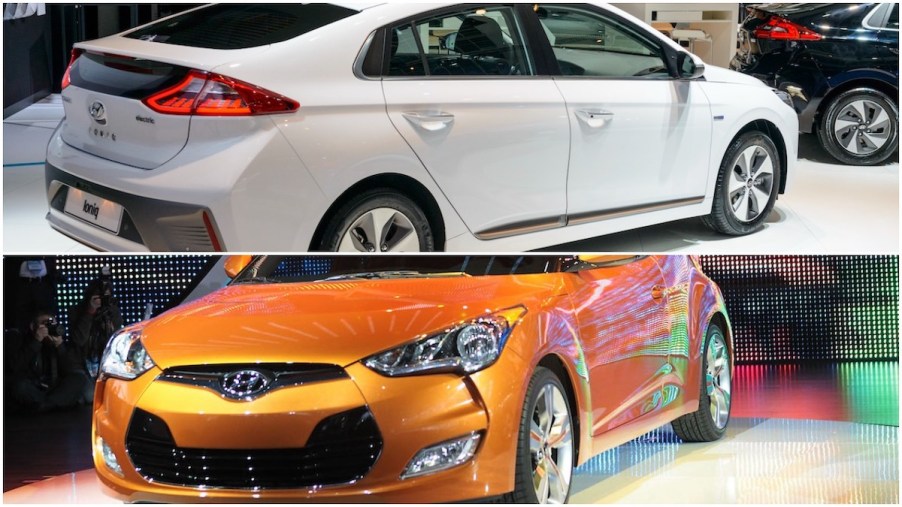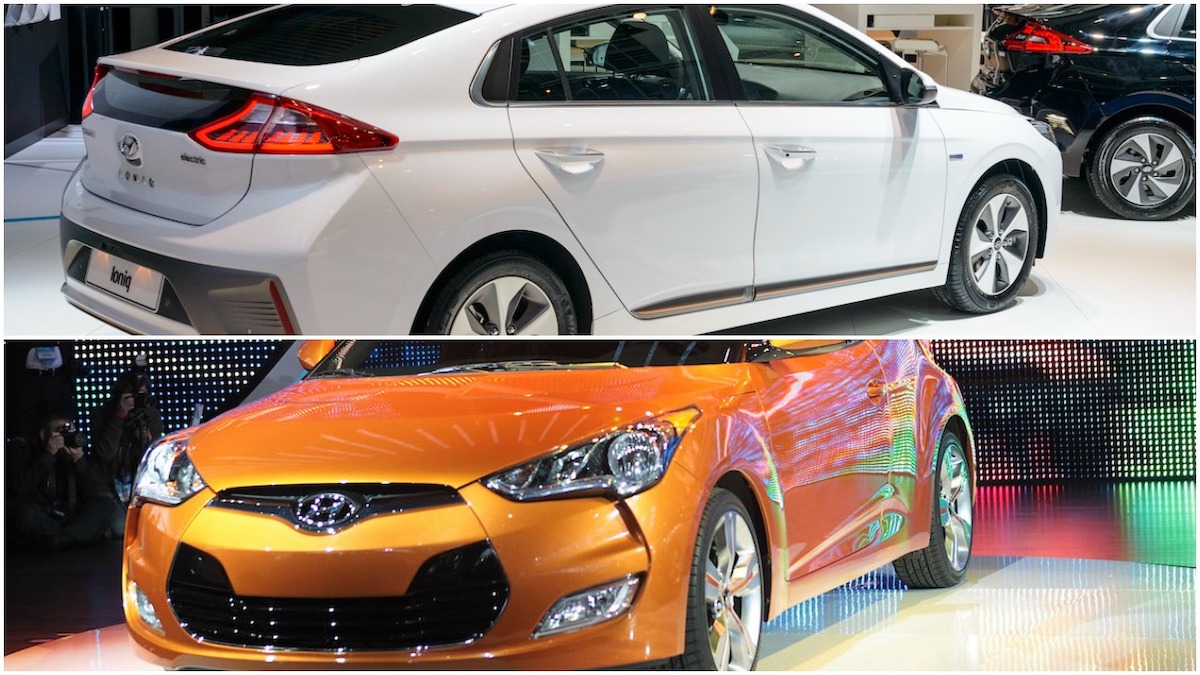
Hyundai Will Be Missing 2 Models in 2022, Replaced With Upgraded Similar Models
In 2022, Hyundai says goodbye to two models: the Ioniq Electric and Veloster. The Ioniq marked the Korean carmaker’s entry into the all-electric market, joining hybrid and plug-in hybrid models. The Hyundai Veloster has been in the lineup since 2011, introduced as a hatchback coupe aimed at the youth market.
Hyundai is phasing out both models to make way for more technologically advanced counterparts and better compete in the compact SUVs segment.
The Hyundai Ioniq Electric was a 1st for the brand

Hyundai has produced three Ioniq models. They include the original flagship Ioniq hybrid hatchback, the Ioniq plug-in hybrid hatchback, and the Ioniq all-electric hatchback. All three are part of the brand’s ambitious goal to be carbon-neutral by 2045. The vehicles look the same on the outside but use different technologies.
Why is Hyundai replacing the all-electric Ioniq? It’s a matter of range. Business Insider reports the Ioniq Electric can go only 170 miles on a full charge, which doesn’t compete in today’s market. On the other hand, the brand’s Kona Electric crossover has an estimated range of 258 miles, and the upcoming Ioniq 5 SUV will go more than 300 miles.
But the hybrid and PHEV Ioniq will live to see another day. Other popular models, including the Kona, Tuscon, Santa Fe, Elantra, and Sonata, are also offered as hybrids for 2022.
The Hyundai Veloster stood out in its class
J.D. Power speculates that the Hyundai Veloster might have had too many quirks for its own good. The three-door hatchback wasn’t a standard configuration. It had one large door on the driver’s side and two smaller doors on the passenger side, making it unique in its class. Emerging in 2011, the Veloster became popular as a hot hatch.
Automakers are replacing small hatchbacks across the board with compact SUVs. Other departing hatches include the Volkswagen Golf and the BMW i3.
However, Hyundai isn’t completely getting rid of its hatch built for performance enthusiasts. The 275-hp 2022 Veloster N — featuring an eight-speed dual-clutch transmission with paddle shifters or a six-speed manual — will survive. Customizable modes will allow drivers to select Normal, Sport, or Sport Plus and calibrate the chassis.
The automaker’s EV plans for the future
Hyundai has ambitious plans when it comes to carbon neutrality. It is using innovations in green energy and technology to improve its EV lineup and achieve carbon neutrality by 2045. The soon-to-be-released Ioniq 5 is the first all-electric SUV from the automaker. The model has an intelligent battery platform that can be configured in various ways. Rear-wheel-drive models will have a 300-mile range, and the all-wheel drive version will go 269 miles.
The Ioniq 5 marks a turning point in the brand’s EV plans. A new Hyundai Electric Global Modular Platform achieves high-voltage technology that gives vehicles better range, more interior space, and faster charging. It will soon be the foundation for the brand’s EVs.
The company is not only focusing on electrifying its lineup. It also has a goal to pioneer hydrogen energy. Hyundai plans to use hydrogen fuel cell technology in passenger vehicles, buses, and trucks.
A current example of this technology is the 2021 Hyundai Nexo. Available only in California, the Nexo is the world’s first hydrogen-powered SUV. It boasts an EPA-estimated 380-mile range and a premium interior.


